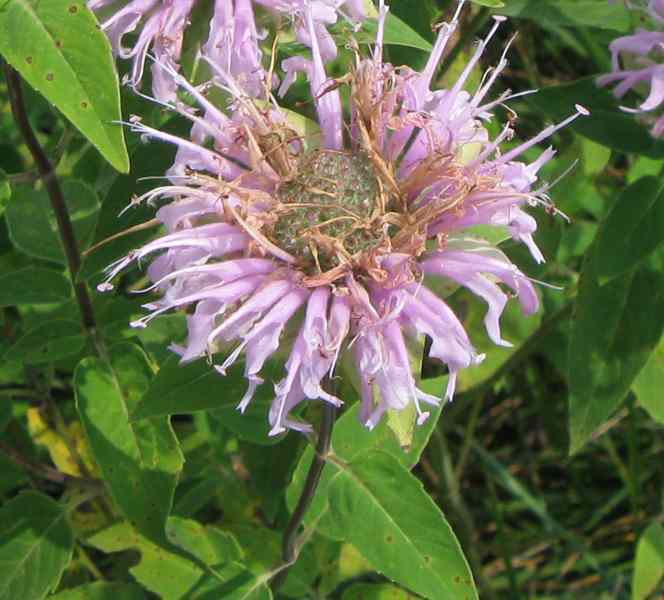Last Wednesday I attended the Wednesdays in the Wild program that was held at Fisher Oak Savanna. I am not sure who sponsors the Wednesdays in the Wild programs, but they are usually in the Lafayette area. About eight people showed up in addition to Brad, a NICHES stewardship manager. We walked a trail that I had not previously been on, one that goes out to an area of the preserve that was purchased only a few years ago.
The Fisher Oak Savanna is a great place for people who like native plants. If you do not care for native plants, there is not much there for you. I enjoyed the chance to have someone who knows a lot more than I do about plants answer questions.
There were several beautiful examples of cardinal flowers not too far from the parking lot.
There was a lot of wild bergamot (Monarda fistulosa) blooming. This plant looks like a purple daisy with sloppy petals.
A closer look shows that what appear to be petals are actually the flowers. It is in the mint family. It is apparently quite easy to grow and often appears in flower gardens.
Out in the prairie section there were some blazing stars blooming. They stood out.
I would have never noticed this milkweed if it had not been pointed out. It is a blunt-leaf milkweed, or Asclepias amplexicaulis. Too bad it did not have flowers.
In the woods were a number of flowering plants that were new to me. Below is some kind of St. Johns wort.
This prairie flower that we found in the woods has a funny name: Monkey flower. Its Latin name is Mimulus ringens.
The flower below we also found in the woods, though its name is Meadow Beauty (Rhexia virginica).
On the way back we saw this flower, which looks a lot like a boneset. It is one of the Joe Pye weeds. (There are three different species and I do not know which of the three this one is.) I have been looking for this flower ever since I helped transplant seedlings of it for Nature Conservancy.
Here is a closer look.
In the back of the property was a yellow fringed orchid (Platanthera ciliaris). It is more common in the southeast than in our area.
The plant I was most surprised to see was a little patch of hemp or ditchweed (Cannabis sativa). I know that it grows in abundance in our area because it was grown for fiber production during World War II and has become invasive, but in all the years of living in Rensselaer, and that includes a number of years in which I jogged most of the roads within four or five miles of town, I had never seen it in the wild. Fifteen or twenty years ago there used to be frequent articles in the paper this time of the year about arrests of people harvesting it, but I have not seen any mention of that that lately.
I am told that the wild plants that grow here have little of the ingredients that make other varieties of this species a popular illegal drug.
One last thing I noticed was that ruins of the old potato field across the road, which was once an Obermyer farm, are more ruined than they were a couple years ago. This building, in particular, was standing a couple years ago.
I see from their newsletter that NICHES is in the process of acquiring another Jasper County Property, a ten-acre plot known as the Ranch half a mile south of the Jasper-Pulaski Fish and Wildlife Area. They describe it as a "black oak sand ridge and buttonbush slough."















Congrats on finding mature Joe Pye Weed. What a great showcasing of plants. Thanks!
ReplyDeleteQuite a pretty walk you had. What a fine event.
ReplyDeleteI went on the walk and am so excited to see your really fine photos of the plants and flowers. A trip there this fall is called for to observe the property in a different season. Thanks again !! It was plenty hot, but that didn't matter at all.
ReplyDelete